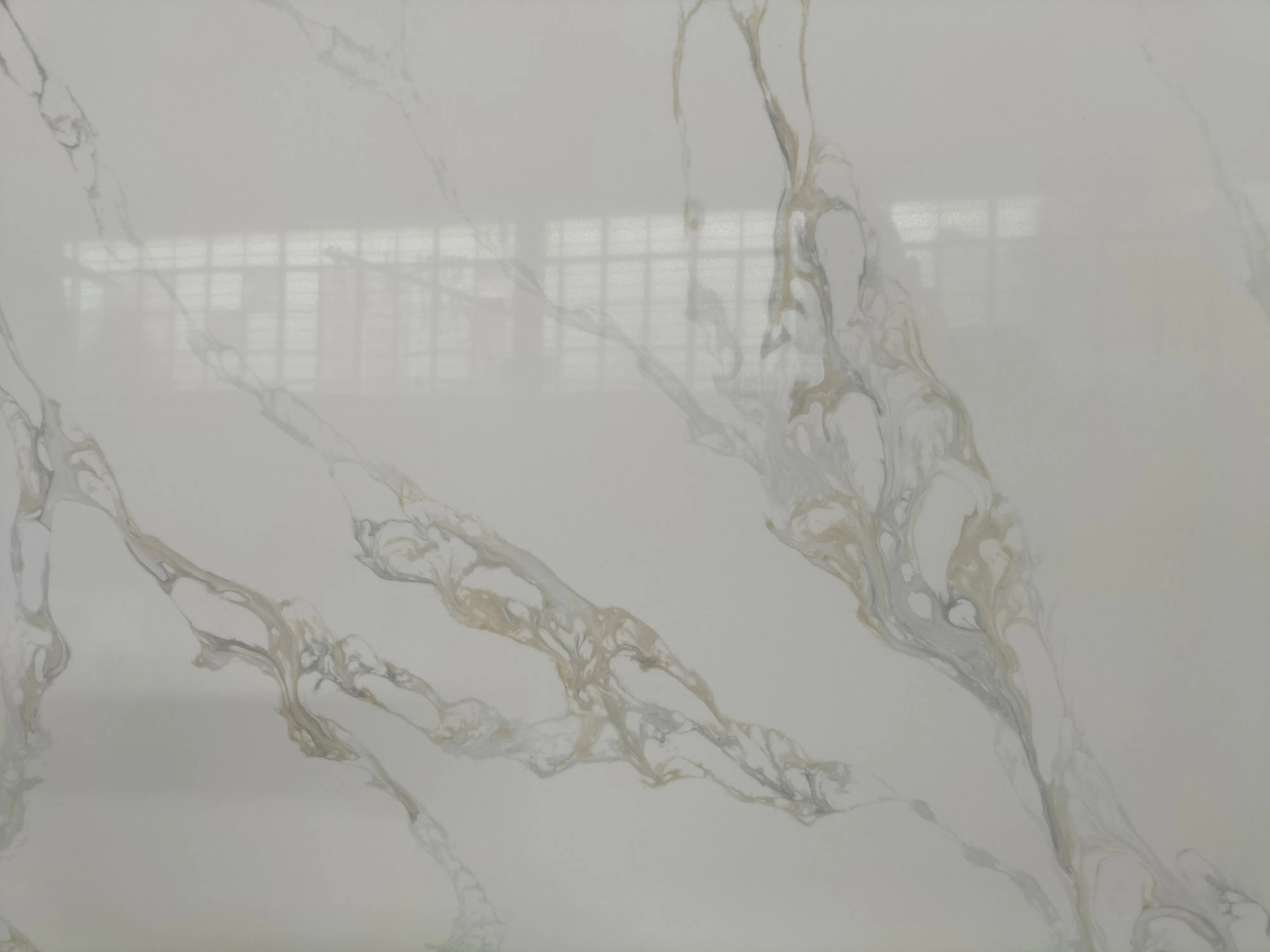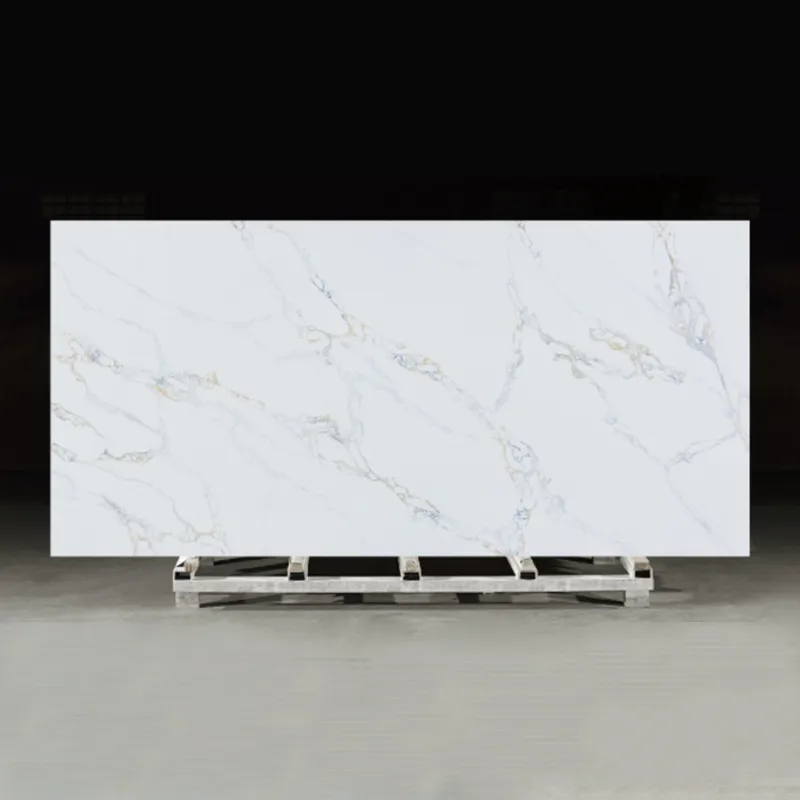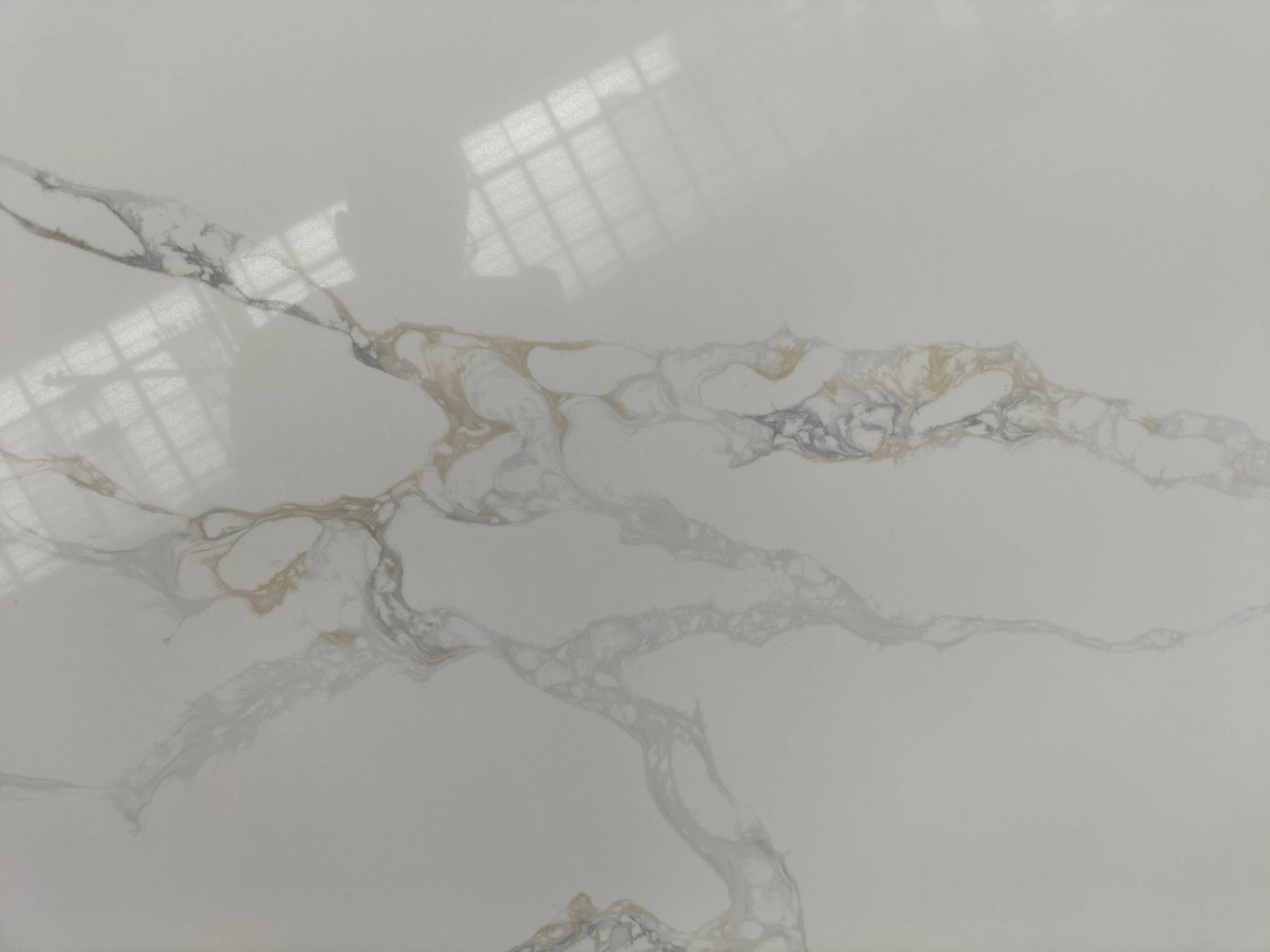In modern home decoration design, quartz countertops have become the first choice of many families and designers due to their superior performance and high-end visual effects. Among the many varieties of quartz, two types, Carrara Quartz and Calacatta Quartz, often receive special attention. These two types of quartz are not only known for their unique texture and beauty, but also their names come from classic natural marble varieties: Italian Carrara marble and Calacatta marble.
However, many consumers often face a question when choosing between these two types of quartz: What is the difference between Carrara Quartz and Calacatta Quartz? Which one is more expensive? This article will explore the definition, appearance characteristics, performance and price differences of the two in detail to help you make a more informed decision in your decoration choices.

What is Carrara Quartz?
Carrara Quartz, as an artificial stone, is inspired by the famous Italian Carrara marble. Carrara Marble is a classic natural stone known for its soft off-white tones and fine grey veins. Due to the beauty and history of natural Carrara marble, it has been an important material in architecture and decoration, and is widely used in luxury homes, art sculptures and high-end commercial buildings.
Carrara Quartz is a high-tech process that uses quartz crystals and materials such as resin to imitate this classic marble look. Carrara Quartz is not only visually close to natural marble, but also has better durability and easy maintenance than natural marble due to the characteristics of quartz stone.
What is Calacatta Quartz?
Similar to Carrara Quartz, the design of Calacatta Quartz is inspired by another famous Italian marble: Calacatta Marble. Calacatta Marble is known for its bright white base and eye-catching thick gold or gray veins, giving it an extremely luxurious visual experience.
Calacatta Quartz is also made through a high-tech synthesis process, mainly imitating the bold texture and strong color contrast of Calacatta Marble. Compared with Carrara quartz, Calacatta quartz has a more impactful design and thicker veins, which is suitable for decoration styles that pursue luxury and visual impact.

What are the appearance characteristics of Carrara quartz and Calacatta quartz?
In addition to the difference in name, Carrara quartz and Calacatta quartz also have significant differences in appearance. They imitate different types of marble, so they show completely different effects in color, texture and overall style.
Appearance characteristics of Carrara quartz
1. Color and texture: Carrara quartz usually presents a gentle white or off-white background with delicate and soft gray veins on it. These veins are evenly distributed, the lines are relatively slender and low-key, and the overall style is elegant and quiet, giving people a soft beauty. The texture of Carrara quartz does not change much, and the vein direction is relatively consistent. It is usually suitable for simple, modern or classic home decoration styles.
2. Applicable scenarios: Because Carrara quartz has a relatively low-key appearance, it is often used for large-area decoration such as kitchen countertops, bathroom counters and walls. Its white base and gray veins can be coordinated with a variety of different styles of furniture and decorations without stealing the attention of other design elements.
Appearance characteristics of Calacatta quartz
1. Color and texture: The color and texture of Calacatta quartz form a strong contrast with Carrara quartz. The base color of Calacatta quartz is usually whiter, and the veins are thicker and more obvious, often gold or gray. The vein texture of Calacatta quartz varies greatly, presenting a bolder and more visually impactful design sense.
The texture lines of Calacatta quartz are irregular, and the veins are relatively wide, giving people a luxurious visual effect. This bold design is usually more suitable for creating a space with a visual center, such as a kitchen island, a background wall in the living room, etc.
2. Applicable scenarios: Because Calacatta quartz has a stronger visual effect, it is often used in high-end and luxurious home improvement projects, especially in places where the design sense needs to be highlighted. Its bright white base and striking veins pair perfectly with luxurious decorations, metal accessories, and more, creating a modern and luxurious space.
What are the physical properties of Carrara and Calacatta quartz?
Although Carrara and Calacatta quartz are very different in appearance, they are similar in physical properties because they are both made of quartz. Quartz is a very durable synthetic material that is widely used in kitchen countertops, bathroom counters, and other high-frequency surfaces.
1. Durability: Quartz is known for its high hardness, strong scratch resistance, and good stain resistance. Both Carrara and Calacatta quartz are far more durable than natural marble. The Mohs hardness of quartz is usually around 7, while marble is about 3 to 4, which means that quartz is not easily damaged by scratches or bumps in daily use.
2. Heat resistance: Although quartz countertops have good heat resistance, they cannot directly withstand extremely high temperatures like granite. Although Carrara and Calacatta quartz can withstand some thermal shock, in order to extend the life of the countertop, it is recommended to avoid placing hot objects directly on the quartz countertop.
3. Stain resistance: Quartz has excellent stain resistance due to its non-porous nature. The surface of Carrara and Calacatta quartz is smooth and dense, and it is not easy to absorb liquids and stains. This means that everyday stains such as coffee, grease, etc. can be cleaned with a simple wipe. In addition, this characteristic of quartz makes it particularly good in humid environments such as kitchens and bathrooms.
4. Maintenance requirements: Quartz countertops have low maintenance requirements. Unlike natural marble, Carrara and Calacatta quartz do not require regular sealing. Their stain resistance makes daily cleaning very convenient, and it is easy to keep the countertop clean and shiny with a mild detergent and a damp cloth.

Carrara quartz vs. Calacatta quartz: Which is more expensive?
Price is one of the key factors that many consumers consider when choosing stone. Although both Carrara and Calacatta are high-end quartz products, there are some differences in their prices.
Carrara Quartz Price
Carrara Quartz is generally considered to be a more affordable high-end quartz product. Due to its relatively low-key appearance and mature production process, Carrara Quartz has a wide market demand and a relatively stable supply. Generally speaking, Carrara Quartz is less expensive than Calacatta Quartz.
Depending on the market price of different brands and regions, the unit price of Carrara Quartz is generally between $50 and $100 per square foot. For most families, Carrara Quartz provides a beautiful and economical countertop option, especially for consumers who pursue a minimalist style.
Calacatta Quartz Price
In contrast, Calacatta Quartz tends to be more expensive due to its more complex veining design and luxurious appearance. Calacatta Quartz is relatively difficult to produce, and its unique appearance makes it a favorite of many high-end homes, so the price also reflects this market positioning.
Generally speaking, the unit price of Calacatta Quartz may reach $80 to $150 per square foot, or even higher. This makes Calacatta quartz the first choice for consumers who seek luxury, personalized design and high-end decorative effects.
Foshan Rongguan Glass Material for Building Co., Ltd. is your reliable partner for premium building materials. We specialize in quartz countertops, artificial marble, and decorative clay tiles, all offered at affordable wholesale prices. Discover our bulk promotions and customized service options today.

